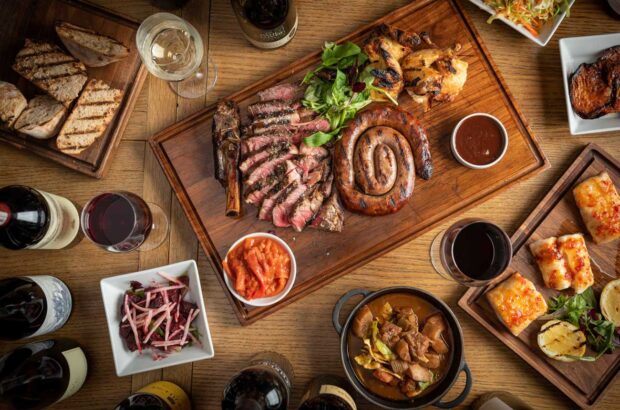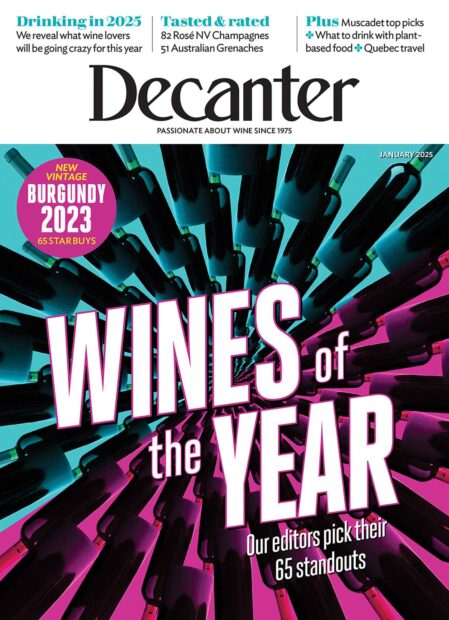There is no escaping the cheese culture as our students have access to invigorating cheese lectures. And as the festive party season is fast approaching, so is the quintessential tradition of indulging in wine with blue cheese until one might burst...
Wine with Blue Cheese: Top matches
-
Stilton – Tawny Port or an aged LBV
-
Gorgonzola Dolce – Marsala
-
Roquefort – Sauternes
-
Cooked blue cheese – White Crozes-Hermitage
Matching wine with Blue Cheese
This type of cheese is on the up; a Norwegian blue cheese named Kraftkar just this month won the World Cheese Awards held in Spain’s San Sebastian, organised by the UK’s Guild of Fine Food. Below, Matthieu Longuère MS of Le Cordon Bleu London offers his advice on pairing blue cheese and wine.
What all blue cheeses have in common is the presence of a strain of penicillin mould which is introduced directly into the cheese curd before it is shaped. The cheese is then pierced with metallic spikes to allow air to permeate and speed the development of the mould. It is this mould that creates the blue veins that have donated their name to the cheese.
As with all cheeses, one has to consider the type of milk – cow’s, ewe’s, goat’s, and whether it is pasteurised or not.
One also has to consider the texture – creamy, crumbly or dry.
Usually, the younger the cheese, the more water it contains and the creamier it is. As it matures, it dries, becomes crumblier, loses its moisture, and concentrates the flavour, enhancing the saltiness and the strength of the cheese.
Because of this saltiness and the presence of mould, blue cheese offers the perfect opportunity to drink those unloved bottles of sweet and fortified wines that may be sleeping in your cupboard at home.
Do you know somebody who wants to start learning about how to pair, taste and serve your favourite wines? Pairing & serving wine: a guide for the real beginner is a new online learning course from Decanter designed to introduce the basic principles and start beginners on their journey through the fascinating world of wine. Find out more…
Unfortunately we cannot cover all varieties of blue cheese in this article so we will focus on three of the most famous ones:
Stilton
I cannot mention Stilton without considering Port, a classic match if there ever was one! The Port styles are split according to whether it has been aged in oak until it becomes fully oxidised and mellow (Tawny) or whether it has been aged in the bottle and retains a certain amount of tannins, and looks like a red wine (Ruby). A Ruby that is not too tannic, with a little bit of age, would always be the best option – something like the Single Vineyard Unfiltered Quinta do Noval Late Bottled Vintage (LBV) 2009 that is bottled after 4 years of wood ageing would be perfect. It has enough complexity to handle all of the earthy mushroom flavours given by the mould but enough fruit and grip to tone down the saltiness of the cheese and increase its unctuosity.
Sometimes, the centre of the stilton gets crumbled into a jar giving it a smooth creamy texture and even more fragrant, mouldier (in a good way) flavours. On this occasion, a slightly different type of fortified wine aged in an oxidative fashion in Solera, like a Sherry, would be more appropriate. A traditional Rutherglen Australian Muscat such as the Stanton & Killeen Classic Rutherglen Muscat from Victoria, made up of younger and older aged wines to give an average age of 12 years, would be perfect. Such an aromatic grape adds an almost raisiny, orange peel character that allows the more delicate flavours of the cheese to shine.
One can also revive an older blue cheese such as dried up stilton, by soaking it in a botrytis affected sweet wine like a De Bortoli Deen Vat 5 Botrytis Semillon for a week or two.
Gorgonzola Dolce
This is the younger, runnier version of this classic, well-travelled, Northern Italian cheese. It is lovely and creamy with a hint of nuttiness and sweetness. I am ashamed of saying it but it is almost a blue cheese for people who don’t usually like them and cannot handle the pungency of older, stronger options. As it has a very soft texture it would work perfectly with a drier style of Marsala from Sicily such as the Marsala Vergine Soleras Secco from Pellegrino. The nuttiness and concentration of the wine will complement the softness of the cheese and highlight its clean mushroom flavour. Our Diploma in Wine, Gastronomy and Management students are always amazed at how well this type of wine performs with this cheese.
Roquefort
This is the most famous French blue cheese. In contrast with the two aforementioned cheeses that are made out of cow’s milk, this is made from ewe’s milk and uses a unique strain of fungi called penicillium roqueforti, which lives in the caves that are used to make and age the cheeses. Also, after four weeks, the cheeses are rubbed with salt and wrapped in aluminium foil to prevent the formation of a rind, allowing the mould to develop from inside, and stay moist.
The classic pairing with Roquefort would be a Sauternes from Bordeaux which is one of the greatest Botrytised dessert wines of the world, with Tokaji from Hungary and Trockenbeerenauslese from Germany or Austria. What these wines have in common with the cheese is that they also get their unique flavour from the intervention of a fungi. In the case of the wines, when very rare and specific climatic and topographic conditions allow for morning mist to appear in the vineyard, a fungi named botrytis cinerea starts to lay its spores on the skins of the grape and drills holes through it. It will only work if the weather is dry enough for the humidity to be dispersed by midmorning so that the grapes don’t get fully rotten. As the moisture escapes from the grapes through the holes, the fungi feeds on the acid and sugar which changes the taste of the wine drastically, making it honeyed and waxy with a lot of umami flavours. This phenomenon is called Noble Rot. The Sauternes from Château Suduiraut in a mature vintage such as 2002 would be perfect. The botrytis notes of the wine will marry perfectly with the flowery mouldy notes of the cheese. The unctuous but not cloying sweetness of the Sauternes will contrast with the distinctive sharp and salty tang of the cheese without being overwhelmed by it.
Cooked blue cheese
The only time that sweet or fortified wine is not the only suitable pairing for blue cheese is when the cheese is used for cooking. Ideally, in this case the wine should be white, as the tannins in red wine tend to clash with the acidity of the cheese and will bring out a bitter, metallic flavour. For something like a blue cheese soufflé or a blue cheese sauce, a mature white wine with well integrated or no oak flavours and softened acidity would be ideal. A white Crozes-Hermitage from the Northern Rhône in France such as the Caves de Tain Les Hauts d’Eole based on Marsanne and Roussanne should fit the bill.
So now, you can encourage your companions during the festive season to appreciate the benefit of introducing a bit of rot in their life by trying mouldy cheese and wines made from noble rotted grapes.
It is also probably the most enjoyable way to have a fix of penicillin.
About Matthieu Longuère MS
Matthieu Longuere is a Master Sommelier based at Le Cordon Bleu London, a leading culinary arts, wine and management school.
Sommelier in the UK since 1994, he has won numerous awards and accolades for wine lists in the establishments for which he has worked: Lucknam Park Country House Hotel, Hotel du Vin Bristol and La Trompette.
Since joining Le Cordon Bleu in 2013, he has developed the school’s comprehensive Diploma in Wine, Gastronomy and Management; a unique programme which combines the theory of wine with a strong emphasis on practical learning.
Alongside the full Diploma, he also teaches an array of evening classes which are relaxed, yet studious, making them perfect for beginners as well as the more knowledgeable.
More articles from Le Cordon Bleu:

Matching wine with duck – Le Cordon Bleu
Different ways to cook duck and wines to choose...

Matching wine with oysters – Le Cordon Bleu
A pairing guide with Master Sommelier Matthieu Longuère...

Matching Wine with Pasta – Le Cordon Bleu
Master Sommelier Matthieu Longuère is your guide...

Matching wine with chicken – Le Cordon Bleu
See Le Cordon Bleu London's guide...

Matching red wine with fish – Le Cordon Bleu
Don't believe the myth, says Matthieu Longuère MS...







